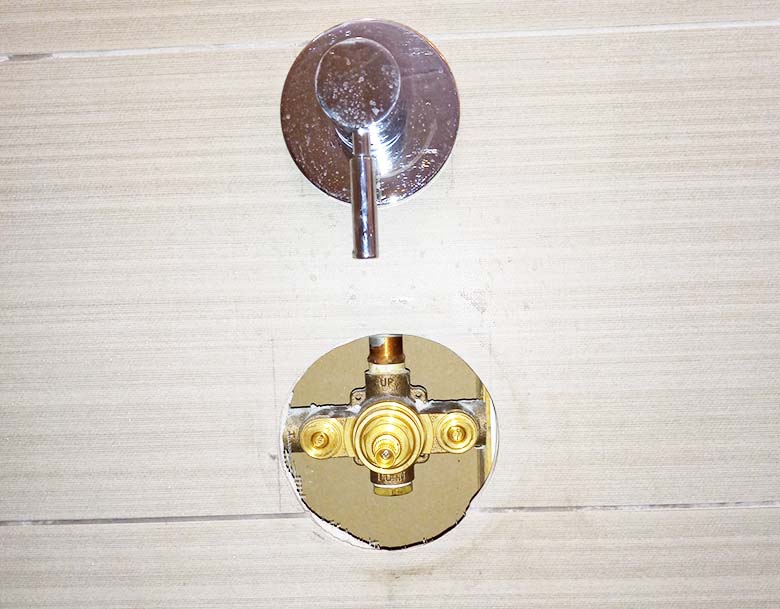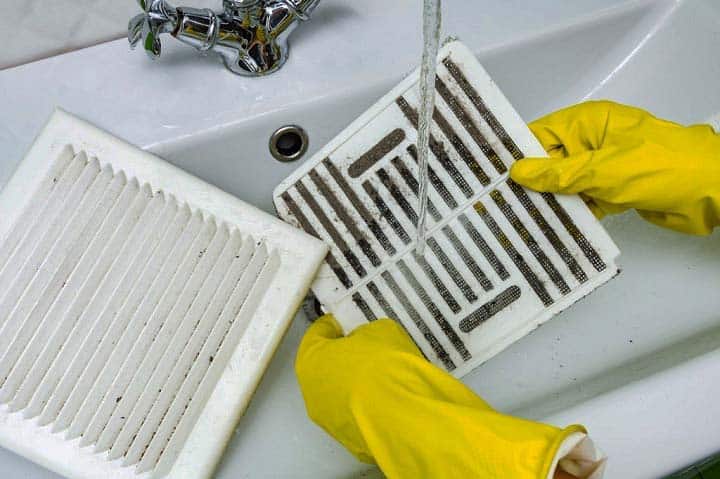The shower valve needs replacement occasionally. It would help if you changed it as it exceeds its shelf life of 5 to 7 years. Changing the older shower valve is OK. However, the actual problems occur after installing it. You will often see the shower needing more water or low pressure. It causes severe headaches.
So, why is there low water pressure in the shower after replacing the valve? Also, how do you boost the water flow pressure in showers and tubs? These are some crucial questions you will need to answer fast to use the shower and tub properly.
Usually, the newer shower valves may need a different size. Or, it might have reduced water flow and inaccurate system. These problems cause low water pressure in tubs and showers. So, you need to check the reasons to fix them ASAP.
Low Water Pressure in Shower after Replacing Valve: Reasons and Solutions:
You have replaced the tub and shower valve. Then, you expect it to provide you with excellent water flow. Sadly, the opposite happens as you only see low water pressure in the tub and shower. It might happen for multiple reasons.
Incorrect valve size:
Shower and tubs faucet need proper sizing for their valves to match the plumbing system. It comes in two different sizes:
- ½ inches diameter
- ¾ inches diameter
The larger the plumbing system diameter at the output location, the more water flow and pressure it will have. Similarly, shower valve size controls the water pressure and flow. When you choose a smaller valve, it compromises the water pressure. So, you will need more water after replacing the valve in your bathtub and shower space.
So, check your shower valve size and buy the accurate one. When you accurately match the valve and plumbing pipe size, it won’t cause low water pressure anymore.
Solution:
Carefully check the old valve and its diameter. Also, check the diameter of the plumbing pipes that supply water to the shower faucet valve. As you determine the size, note it down. Then, purchase the correct size valve for the tub and showerhead from the hardware store. It will help you fix the low water pressure problem quickly.
Your valve has updated water flow:
Another reason for low water pressure after replacing the shower valve may be due to the updated water flow standard. Older shower and tub valves have 5 to 8 gallons of water flow. Federal and state laws didn’t have any strict rules on the water pressure previously. So, manufacturers would make the faucet and valves larger. It enabled the faucets to carry more water.
Nonetheless, newer plumbing rules have restricted the water flow considerably. These days, newer shower and tub valves can accommodate only 1-1/2 gallons to 2-1/2 gallons of water. So, it has seen a 2/3rd reduction in the water flow. As it implies, you must get the valve with a maximum water flow rate. Still, you might get less water than the previous shower faucet.
Solution:
This problem is hard to solve. You may purchase the older models identical to your shower valve. Yet, it might need to meet the increased water demand in your shower space. Moreover, the updated water system will still need higher water pressure. You will, thus, need to be satisfied with the water pressure you are getting with the new valve.
Problems in water supply:
The water supply system could be problematic too. Many older homes may pull the water from the well and supply it to the bathtubs and showers. Thus, newer valves may not be designed to work with the well. Usually, you can pull 5 to 6 gallons of water per minute from the well.
On the contrary, showerheads can easily accommodate 8 gallons of water each minute. As it suggests, the well lacks enough water to supply the shower. Moreover, newer shower bodies only give you 2.5 gallons of water each minute. As we mentioned earlier, it is 1/3rd of the water supplied by the previous versions.
All the problems in the water supply system will reduce the water flow and pressure. You may not notice them with the older valve. However, they will become apparent and evident with the new one.
Solutions:
You can eliminate these problems in different ways. First, consider upgrading the plumbing pipes at home. If you have ½ water supply lines for a shower, upgrading to ¾ inches will boost the water flow and pressure.
Additionally, consider increasing the well capacity. If you make it larger, it will supply the tub and shower with more water. However, it’s an expensive and impractical solution. You should invest in a better valve to keep getting the water pressure you got previously.
Too many valves running simultaneously:
Finally, check if the well or tank reservoir is supplying water to multiple valves simultaneously. When it happens, your shower will receive less water flow and pressure than it needs. Often while working with the new shower valve, people unconsciously run multiple faucets. As it happens, you will surprisingly get reduced water pressure.
Sometimes, you will have cold water but not hot water. If it happens after installing the new valve, examine the water heater immediately. You may have turned off its thermostat while working with the shower and tub faucet. It will lower the hot water pressure considerably.
Solution:
Carefully observe all the water faucets in your home. If you see multiple faucets running, turn them off properly. Then, open the new shower valve and see if it gets enough pressure. In most cases, it should solve the problem.
If you see adequate pressure for the cold water but not for hot water, check the water heater too. If it fails to heat the water, your shower valve will not supply hot water. In such cases, fixing the thermostat and cleaning sediments from the water heater will solve the problem.
Installing adjustable showerhead and valve:
Many people will replace the showerhead and valve simultaneously. When it happens, it’s common to see a drop in the shower valve water pressure. It happens because the adjustable showerhead may still be in factory mode. So you will need more time to supply the required water pressure.
Plus, your previous bathtub and showerhead may have low water pressure. If it causes the problem, you should invest in a high-pressure showerhead.
Solution:
You must change the factory settings of the adjustable showerhead. It should provide you with enough water pressure in the tub and shower. However, changing the showerhead settings and adjusting them with the existing system can be tricky. So, follow our suggestions.
How do I adjust the pressure on my shower valve?
Do you find it hard to adjust your shower valve pressure? If yes, you must follow our steps to quickly adjust and change the showerhead pressure.
- Often, a restrictor or water flow limiter inside the showerhead will lower the water flow. You need to remove the restrictor and boost the water flow.
- For this, turn off the water supply lines and pry off the showerhead cap. Now, you can look into the showerhead inside.
- You should find the rubber washer inside the showerhead that covers the restrictor. You can see the water flow restrictor as you remove the washer with the pliers.
- After that, with the help of a flathead screwdriver, you must hold and pull out the water flow restrictor.
- Finally, reinstall the shower cap and the body into its position. Also, connect it to the valve and turn on the water supply lines.
You can check the water flow now. It should provide you with enough water pressure for a comfy and warm shower. Also, you will need an adjustable wrench, rag, paper clips, needle nose pliers, and Teflon tape for the purpose. The Teflon tape will secure the connections.
Why Has My Shower Suddenly Lost Pressure?
A sudden drop in water pressure in the shower and bathtub may happen for different reasons. So, you need to inspect the system thoroughly to troubleshoot it.
- There can be leaks in the shower plumbing pipes. If the shower water supply pipes are too old, they will leak due to damage. The metal pipes may be brittle and start leaking too much. So, water won’t reach the shower system.
- There can be sediment and mineral development inside the showerhead. It will restrict the water flow largely. Hard water minerals such as calcium and magnesium will also block the plumbing pipes. It happens mainly with the hot water supply line because hot water reacts with these chemicals more.
- The regulator inside the shower valve may be faulty. If the pressure valve goes wrong, it can’t control the right water pressure. As a result, you won’t get the correct pressure. It can delay your bathing.
- Single-head showers will have a mixing valve inside them. When the mixing valve gets old or damaged, it won’t mix the cold and hot water. So, the shower valve will deliver a different amount of water.
- Finally, the water heater may need to be fixed or corrected. Its thermostat may be damaged, has wrong settings, or has sediment development. All these reasons are responsible for the sudden fall in water pressure in the shower.
With a quick inspection of the system, you should start fixing it. Otherwise, you can call a professional to solve it.
I am James Martin, An professional plumber with more than 16 years of experience. The main purpose of my writing is to share my experiences of helping others. Be with me and explore bathroom plumbing, installation, cleanness ideas, and many more.




